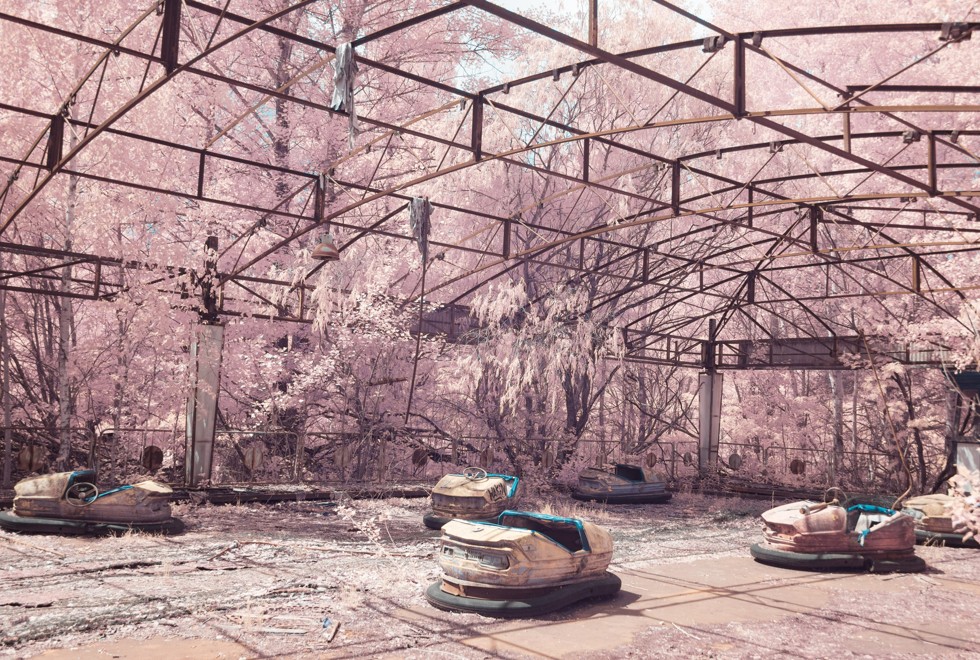
Hong Kong photographer ventures inside Chernobyl exclusion zone
Steven Wu went from exploring abandoned sites in the city to entering the ultimate zone of devastation – the ghost town near the Chernobyl nuclear power plant

Believe it or not, “radiation tourism” is a budding business.
The cataclysmic explosion at the Chernobyl nuclear power plant in the then Soviet Union in April 1986 prompted photographer Steven Wu, who loves visiting ruined sites, to take a two-day tour last month of the “exclusion zone” in what is now Ukraine.
The 28 year old discovered his love for photography after buying a camera to document his experiences at the Chinese University.
In 2014, he came across a Facebook post mentioning a group called Hong Kong Urban Exploration (HK URBEX), which seeks out and explores abandoned sites in Hong Kong.
Wu was taken with the idea of photographing derelict places, so he joined the team on their next adventure. Since then he has photographed almost every abandoned site in the city.
As a history lover, Wu was thrilled by Chernobyl as it was a one-of-a-kind place. “Hong Kong is densely populated. Abandoned places don’t feel so far removed. Chernobyl covers a huge area and that’s exciting.”
As he took photographs at Chernobyl, he thought of Hong Kong’s proximity to the Daya Bay nuclear plant across from Mirs Bay.
Chernobyl’s exclusion zone is 30km across. By comparison, Daya Bay is about 50km from Tsim Sha Tsui. Hong Kong residents were worried about the nuclear power plant when it was being planned in the 1980s.
Nuclear plants are said to be at their most dangerous at the beginning and end of their life cycle. The accident at Chernobyl occurred during the first two years of operation.
Wu described feelings of fear when he first arrived at Chernobyl due to radiation and high levels of toxicity in the area.
He said when he first entered the exclusion zone, everything was completely still. “[The residents] were told they were going away for a few days. They took a suitcase and everything else was left behind. It remains exactly like that.”
Visiting the exclusion zone is no easy task. Wu said he had to submit his passport and obtain authorisation before embarking on the trip, which had to be led by a guide. He also had to take equipment to monitor radiation levels.
Wu was overwhelmed by curiosity on several occasions and left the tour to capture unusual images from the ghost town of Pripyat. The area is a restricted military zone with “hot spot” radiation areas and potentially dangerous buildings.
He outlined one of the detours he made with other HK URBEX photographers.
“The tour made its way to the underground level of a hotel, but we stayed behind and went up to the third and fourth floors.”
When asked what he wanted to capture in his images, he replied: “I wanted people to feel exactly the same as I did. Fear and excitement of the unknown. This place was a frozen moment in time.”
I wanted people to feel exactly the same as I did. Fear and excitement of the unknown
Wu wanted to document all the sites in the town that could resonate with a Hong Kong audience. The hotels, hospitals and schools in the abandoned town were of particular interest.
He made a comparison with abandoned sites in Hong Kong. “Ruins here are empty. Inhabitant had time to take their belongings with them. In Chernobyl even surgical equipment and school books remain in place.”
Facebook fans have responded to some of Wu’s more dark and distressing images with comments such as “really chilling”.
One user was prompted to comment: “This makes me think of the mainland pressure cooker.”


